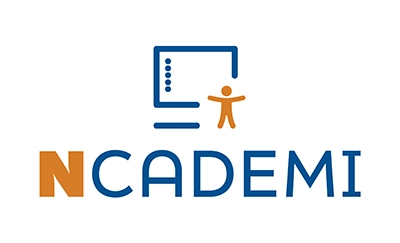Legal Foundations
Overview
Title II of the Americans with Disabilities Act (ADA) and the Individuals with Disabilities Education Act (IDEA) establish the legal foundation that guarantees students with disabilities the right to accessible educational materials. Educational materials can be digitally accessible from the beginning, as required by ADA Title II, or they can be converted to accessible formats (e.g., large print, audio, digital text, or braille) for eligible students with disabilities, as required by IDEA. The resources on this page provide guidance on how to ensure your state or local educational agency is proactively approaching digital accessibility through Title II and, as required, providing accessible formats for eligible students with disabilities under IDEA.
To understand the differences and overlap in how these two important laws apply to the provision of accessible educational materials, review this chart comparing IDEA to Title II of the ADA.
ADA Title II Resources
Meeting the ADA Title II Web and Mobile Accessibility Requirements: A Roadmap for State and Local Educational Agencies
Schools are under a short timeline to come into digital accessibility compliance with a new rule under Title II of the Americans with Disabilities Act. This guide will help your state or district take action.
Act Now: Understanding New PreK-12 Digital Accessibility Requirements
Watch an archived webinar for an overview of how ADA Title II applies to the digital educational materials provided by state and local educational agencies. Access the summary of the Q&A discussion, as well as recommended actions your agency can take now to meet the law’s conformance timeline.
Fact Sheet: New Rule on the Accessibility of Web Content and Mobile Apps Provided by State and Local Governments
This web page is hosted by the U.S. Department of Justice. Although the target audience is state and local governments broadly, state and local educational agencies will benefit from the introductory information about the Title II rule’s requirements.
State and Local Governments: First Steps Toward Complying with the Americans with Disabilities Act Title II Web and Mobile Application Accessibility Rule
This web page is hosted by the U.S. Department of Justice. Although the target audience is state and local governments broadly, state and local educational agencies will benefit from the suggested action steps.
IDEA
More to the Myths and Facts: Addressing Accessible Educational Materials in the 2024 Assistive Technology Guidance
In January 2024, the U.S. Department of Education published a guidance document, Myths and Facts Surrounding Assistive Technology Devices and Services. This resource explains how accessible educational materials (AEM), specifically accessible formats, relate to those myths and facts.
NIMAS & NIMAC: What SEAs and LEAs Need to Know
This resource outlines key responsibilities for state and local educational agencies (SEAs and LEAs) under IDEA to provide accessible formats in a timely manner for eligible students with disabilities.
Addressing Accessible Educational Materials in the IEP: SEA Examples
This table provides examples of how some state educational agencies (SEAs) address students’ need for accessible educational materials in the Individualized Education Program (IEP). These examples are provided for informational purposes only and are not endorsed by NCADEMI.
Accessible Educational Materials in the Individualized Education Program (IEP)
This policy guide was authored by the National Center on Accessible Educational Materials, which was previously funded by the Office of Special Education Programs. The guide points to a number of locations in the IEP where it might be appropriate to refer to a student’s need and use of accessible educational materials.
